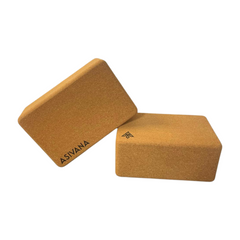What is Restorative Yoga?
Jack UtermoehlShare
Restorative yoga is a gentle, therapeutic practice designed to activate the parasympathetic nervous system and promote deep healing and rest.
Known for its slow pace and long-held poses, restorative yoga prioritizes stillness, comfort, and support—using props to fully hold the body with minimal muscular effort.
This style is often used as a recovery method for physical or emotional stress.
By fully supporting the body in restful positions, the practice allows tension to melt away layer by layer. It is accessible, grounding, and ideal for anyone looking to slow down and reset their nervous system.
Origins of Restorative Yoga
Restorative yoga developed in the 20th century from the teachings of B.K.S. Iyengar, who pioneered the use of props to make yoga more accessible to students with injuries or limitations.
His approach inspired students like Judith Hanson Lasater to create a specific branch of yoga focused entirely on relaxation and recovery.
While rooted in classical yoga, restorative yoga reflects a modern understanding of anatomy and therapeutic needs, adapting traditional poses for maximum ease and introspection.
Yoga Essentials for Your Practice
Support your yoga journey with high-quality, sustainable props designed for comfort and stability.

Crafted from eco-friendly cork for durability and a comfortable practice.
$24
Shop Now
Includes everything you need to get started: a mat, blocks, and a yoga strap.
$120
Shop NowRestorative Yoga Practice
The practice consists of a small number of passive postures—often fewer than ten per class—held for extended periods (5–20 minutes each).
Props such as bolsters, blankets, blocks, straps, and sandbags are used to create total support. Breath awareness and minimal instruction create an atmosphere of deep internal quiet.
Common Poses: Legs up the Wall (Viparita Karani), Supported Fish Pose (Matsyasana), Reclining Bound Angle (Supta Baddha Konasana), Supported Savasana
Restorative Yoga Suitability
Experience Level: Beginner-Friendly
Physical Demand: Relaxation-Focused
Mind-Body Engagement: Primarily Meditative
Adaptability: Highly Adaptable
Focus Area: Stress Relief & Relaxation
Notes on Restorative Yoga
Restorative yoga offers a refuge from overstimulation and chronic stress.
It improves sleep quality, reduces cortisol levels, and enhances flexibility by targeting connective tissues in a gentle way.
This practice is especially beneficial for individuals recovering from injury, illness, or burnout.
Similar Styles
Yin Yoga, Iyengar Yoga, Prenatal Yoga, Therapeutic Yoga
Equipment
Required: Yoga Mat, Bolster, Yoga Blanket, Eye Pillow
Nice to Have: Yoga Blocks, Yoga Strap
Optional: Sandbags
References
Yoga Body, Buddha Mind by Cyndi Lee
Relax and Renew: Restful Yoga for Stressful Times by Judith Hanson Lasater







